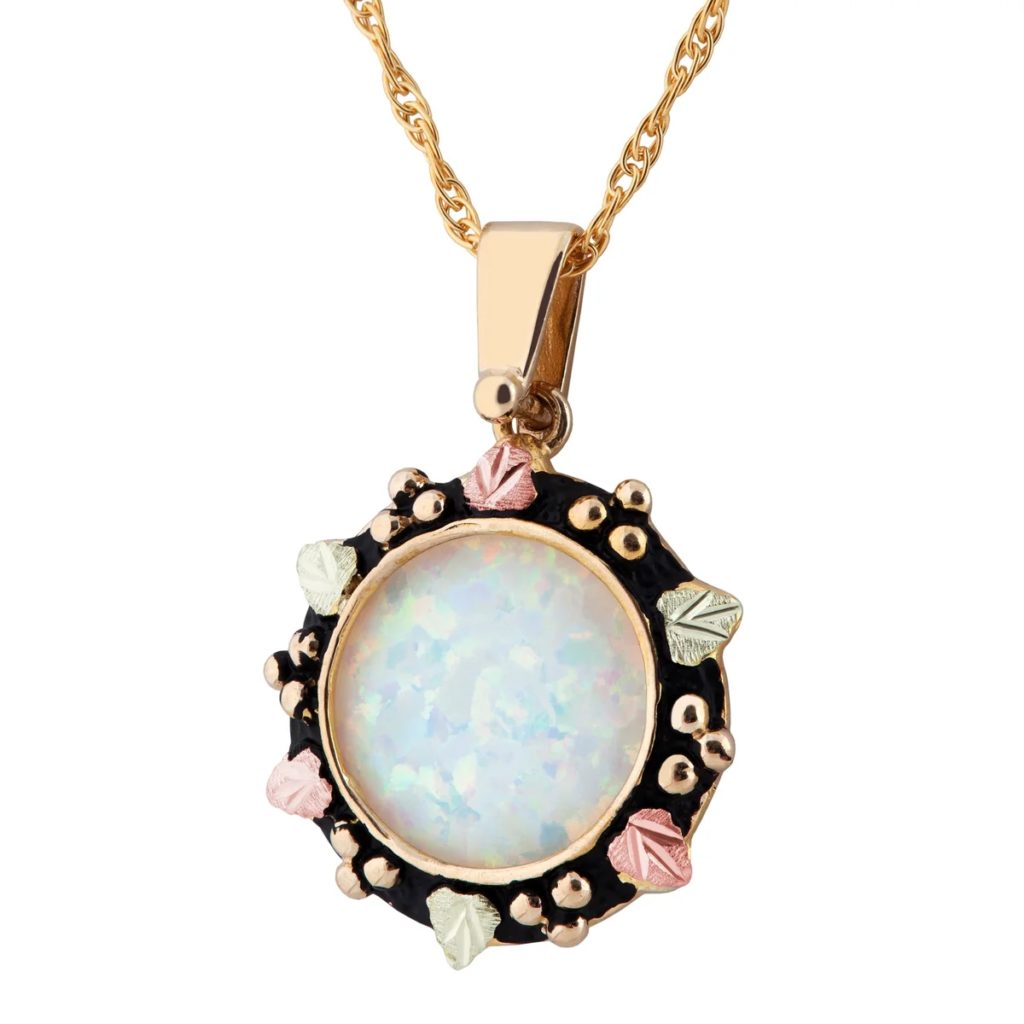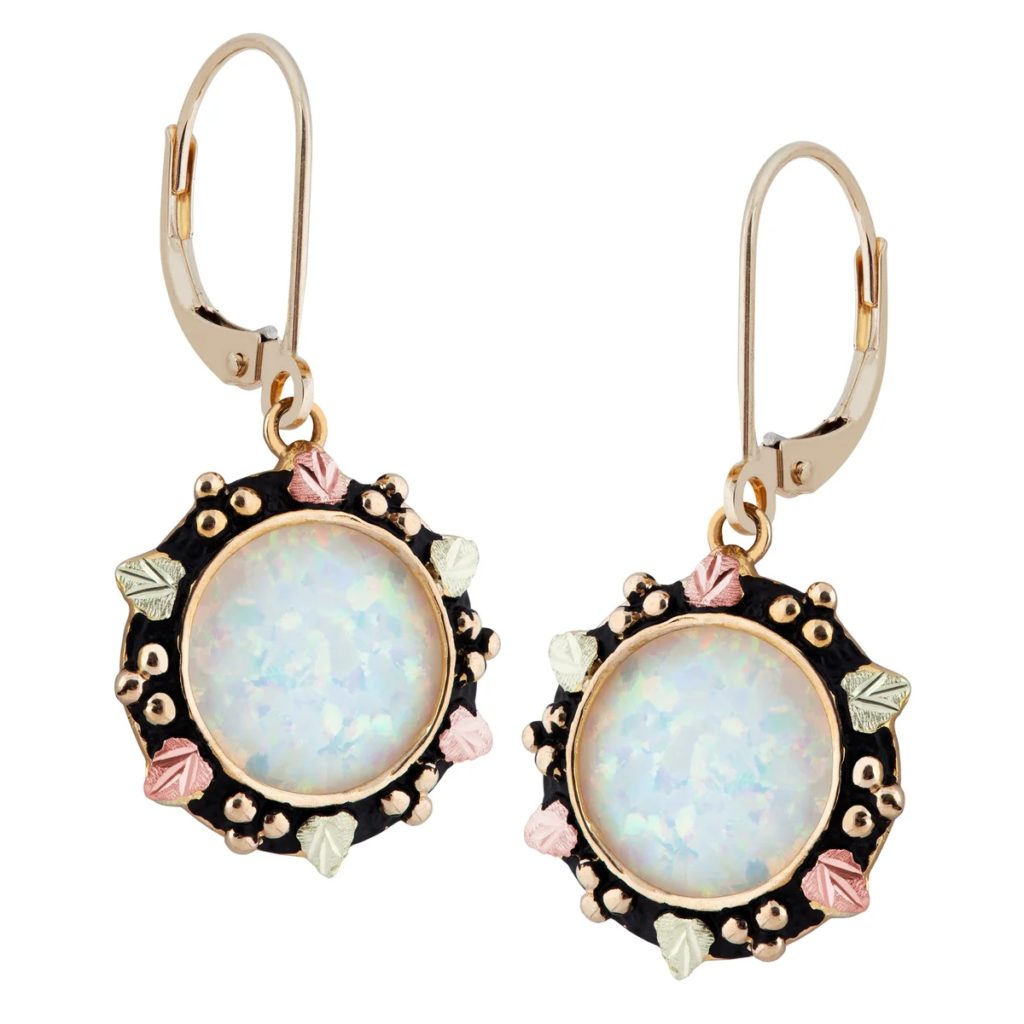Were You Born In October? Then Opal Is Your Birthstone!
The Opal is the birthstone for October, so why not celebrate your October birthday in style with Landstroms Black Hills Gold Opal jewelry!
What a beautiful season to celebrate a birthday – a season of change and colors as the leaves turn, and trees prepare for a period of dormancy. But the leaves on these pieces of Opal jewelry won’t ever change color on you! They will shine in their original full color for as long as you own them, and they will always maintain their value. All Landstroms Opal earrings and necklaces are made of genuine Black Hills Gold at their only factory located in the beautiful Black Hills of South Dakota. We suggest the following Opal earrings or Opal necklace or you can choose from a wide selection of other Opal jewelry here on our website. Just type the word “opal” in the search box at right. But hey – if it’s your birthday this month, why not buy both and have a complete set? And don’t forget to look for the discount coupon on the bottom of our Home Page.
Black Hills Gold Opal earrings
These gorgeous Opal earrings by Landstroms are made from 10 karat Black Hills Gold with details in baked black enamel and 12 karat pink and green Black Hills Gold leaves. Just as in the matching necklace at right, the beautiful lab-created* Opals are 12 millimeter in diameter and shine and sparkle in a changing array of colors which experts describe as “opalising”. The leverbacks are made from 14 karat gold and like everything Landstroms makes, these earrings are guaranteed for life.

Like Landstroms Opal earrings below, this beautiful matching necklace features a 12 millimeter diameter lab-created* Opal set in 10 karat Black Hills Gold highlighted by baked black enamel antiquing, pink and green 12 karat Black Hills Gold leaves and a 10 karat bail. It comes with a complimentary 18 inch long gold-filled chain.

*Lab-created Opals are the same gemstone as genuine Opals, the only difference being that the extreme pressures and temperatures which form these stones in nature are duplicated in the lab. The result is a quicker process (by hundreds of thousands of years 🙂 and sometimes even stones with less inclusions, or flaws.
You can learn more about the Opal here: https://geology.com/gemstones/opal/

